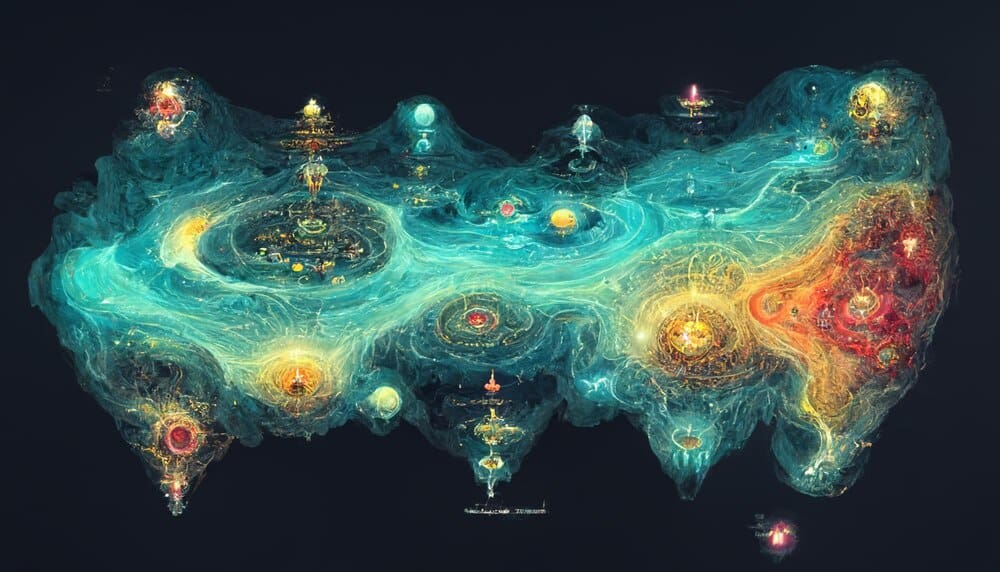In the intricate universe of Vedic Astrology, a Vargottama planet represents a point of supreme cosmic power and stability, affecting an individual by granting a celestial body unparalleled strength and purity. This phenomenon occurs when a planet occupies the exact same zodiac sign in both the primary birth chart, known as the Rashi or D1 chart, and the crucial divisional chart of marriage and inner strength, the Navamsha or D9 chart. Found at specific degree segments within each sign, a Vargottama placement is so significant because this cosmic repetition acts as a powerful seal of approval, ensuring the planet’s inherent qualities and promises manifest with unwavering consistency and potency throughout a person’s entire life, making it a foundational pillar of their destiny.
The Two Pillars: The Rashi (D1) and Navamsha (D9) Charts
To grasp the power of Vargottama, one must first understand the two critical charts from which it is derived. The first is the Rashi chart (D1), which is the foundational horoscope calculated for the exact moment of your birth. It is the celestial map of the sky when you took your first breath.
Think of the Rashi chart as the “tree” of your life. It represents your physical body, your personality, your visible talents, and the tangible circumstances you are born into. It is the “what” of your existence—what you look like, what resources you have, and the overall environment you will navigate.
The second, and arguably more subtle chart, is the Navamsha chart (D9). This is a divisional chart, created by mathematically dividing each sign of the Rashi chart into nine equal parts. The D9 chart is often called the “fruit” of the tree. It reveals the underlying quality and ultimate potential of the planets seen in the D1 chart.
The Navamsha reveals your inner self, your soul’s true nature, your dharma (life purpose), and is the primary chart for understanding marriage, partnerships, and late-life experiences. A planet might look strong in the Rashi chart, but if it is weakened in the Navamsha, its promised results may never fully ripen. Conversely, a planet that gains strength in the D9 shows a hidden power that blossoms over time.
What Exactly is Vargottama?
Vargottama, a Sanskrit term meaning “best division,” is the simple yet profound condition where a planet is located in the same zodiac sign in both the Rashi (D1) chart and the Navamsha (D9) chart. For instance, if Jupiter is in Cancer in your main birth chart and also in Cancer in your Navamsha chart, then Jupiter is Vargottama.
This alignment locks in the planet’s energy. It signifies that the external promise of the planet (D1) is perfectly aligned with its internal, karmic essence (D9). There is no discrepancy between the outer potential and the inner reality, making its influence incredibly direct and powerful.
The Mechanics of Vargottama
This placement isn’t random; it occurs at specific degree intervals within each sign. A zodiac sign spans 30 degrees, and for the Navamsha, it is divided into nine segments of 3 degrees and 20 minutes each. A planet becomes Vargottama when it falls into a specific one of these nine segments.
- For Movable Signs (Aries, Cancer, Libra, Capricorn), a planet in the first Navamsha (0 to 3°20′) is Vargottama.
- For Fixed Signs (Taurus, Leo, Scorpio, Aquarius), a planet in the fifth Navamsha (13°20′ to 16°40′) is Vargottama.
- For Dual Signs (Gemini, Virgo, Sagittarius, Pisces), a planet in the ninth Navamsha (26°40′ to 30°00′) is Vargottama.
While any planet can be Vargottama, the concept also extends to the Ascendant (Lagna). When the Ascendant sign is the same in both the D1 and D9 charts, it is called Lagna Vargottama, a highly auspicious placement for personal strength and stability.
Why a Vargottama Planet Wields So Much Influence
The significance of a Vargottama planet stems from three core principles: purity, amplified strength, and its role as a stabilizing anchor in the horoscope.
Purity and Consistency
A Vargottama planet delivers its results with remarkable purity. Its energy is not altered or modified as it translates from the physical realm (D1) to the subtle, inner realm (D9). This means the person experiences the planet’s qualities in a very clear and undiluted way.
The effects are also profoundly consistent. While other planets may fluctuate in their ability to give results based on challenging transits or planetary periods (dashas), a Vargottama planet remains a steady source of strength. Its positive influence is a constant throughout the individual’s life.
Amplified Strength
This placement gives a planet immense intrinsic strength, or bala. It is considered as auspicious as a planet in its own sign (Swakshetra), and some classical texts hold it in even higher regard. This strength allows the planet to overcome obstacles and powerfully manifest its significations.
Even a naturally malefic planet like Saturn or Mars becomes a functional powerhouse when Vargottama. Its challenging qualities, such as Saturn’s discipline or Mars’s aggression, are channeled with precision and purpose, often leading to great achievement.
A fascinating case is a debilitated (Neecha) planet that becomes Vargottama. While debilitation suggests initial struggles, the Vargottama status provides the deep inner resilience to overcome these challenges, eventually leading to extraordinary success precisely in the areas governed by that planet.
A Pillar of the Horoscope
Think of a Vargottama planet as a powerful anchor in your astrological chart. During difficult life periods, when other planetary energies may be in turmoil, the Vargottama planet provides a reliable source of stability and strength. The houses it rules and the house it occupies in the chart gain immense fortitude, becoming areas of life where the individual can always find their footing.
Reading the Signs: How to Interpret Vargottama Planets
The effect of a Vargottama planet is always colored by its natural characteristics. Here is how some of the key planets express themselves when they achieve this status.
Benefic Planets (Jupiter, Venus, Moon, Mercury)
- Jupiter Vargottama: This bestows deep, unwavering wisdom, profound faith, and an unshakeable sense of optimism. It indicates a person with a strong connection to ethics, higher knowledge, and philosophy, often blessed with good fortune, benevolent teachers, and supportive children.
- Venus Vargottama: This grants exceptional artistic talent, a highly refined aesthetic, and a powerful capacity for pure love and devotion. It blesses the individual with strong relationship karma, indicating a stable, loving, and dedicated partner and a life filled with beauty and comfort.
- Moon Vargottama: This is a blessing for incredible emotional strength, mental clarity, and inner peace. The person is deeply in tune with their own feelings but not overwhelmed by them. They possess a stable mind, strong intuition, and a nurturing presence that comforts others.
- Mercury Vargottama: This creates a brilliant and versatile intellect. It produces powerful communicators, sharp analysts, and gifted writers or speakers. Their thinking is clear, logical, and consistent, giving them a remarkable ability to learn, strategize, and articulate complex ideas.
Malefic Planets (Saturn, Mars, Sun)
- Saturn Vargottama: This forges a personality of unmatched discipline, patience, and perseverance. While Saturn can bring delays, in this position, it guarantees that hard work will pay off. It builds lasting success and authority over time, creating a person who is responsible, structured, and capable of immense achievement through sheer tenacity.
- Mars Vargottama: This provides immense courage, focused drive, and controlled, productive energy. Unlike a purely aggressive Mars, this energy is channeled constructively toward goals. It creates a powerful leader, a strategic executive, or a courageous defender who acts with precision and fearlessness.
- Sun Vargottama: This indicates a strong, stable ego and a powerful sense of self. It gives natural confidence, leadership qualities, and a clear connection to one’s soul purpose (atma). This person has an innate authority and dignity that commands respect without arrogance.
The Ultimate Anchor: Vargottama Lagna
Perhaps the most powerful of these placements is when the Ascendant, or Lagna, is Vargottama. This means the rising sign is the same in both the D1 and D9 charts. This alignment creates a person of immense character and integrity.
Individuals with Vargottama Lagna have a personality, physical constitution, and life path that are incredibly stable and well-defined. They possess a strong sense of self from a very young age and are not easily swayed by external pressures or circumstances. Their life proceeds with a distinct, unwavering purpose, and this placement is itself considered a powerful Raja Yoga, or combination for success and status.
In conclusion, the Vargottama placement is a mark of profound karmic strength and stability within a Vedic horoscope. By repeating its position in the foundational Rashi chart and the all-important Navamsha chart, a planet’s energy becomes purified, amplified, and incredibly consistent. Discovering a Vargottama planet or Ascendant in your chart is like finding a cosmic guarantee—a sacred promise that the strength and potential of that planet are locked in, destined to serve as an unwavering pillar of support on your life’s journey.








